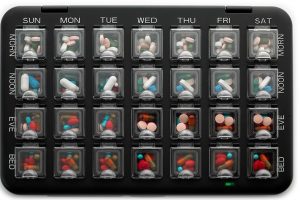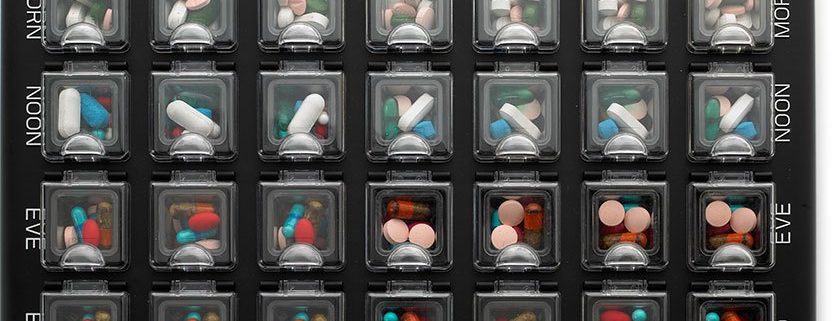Medication Safety Ideas – Part II
 As you read in Part I of Medication Safety, knowing what medications are being taken is beneficial for several reasons; and in addition, setting up a process for when the medications should be taken is essential.
As you read in Part I of Medication Safety, knowing what medications are being taken is beneficial for several reasons; and in addition, setting up a process for when the medications should be taken is essential.
Now for the next step: to come up with an easy way for you to keep track of the medicines. Set up a table that includes the following headings: Medication, Dosage, and Reason for taking and general headings for time of day (a.m., noon, p.m., bedtime). To get an idea of what I mean by this, click on the word Content in this sentence. You will be taken to the ‘Content Tab’ for the Senior Care Organizer (SCO). Once on that page, click on “Click to View” where you will be able to see an example for this type of Medication Table, among other document examples found in the SCO. There is an alternative to this, which I will describe later.
Secondly, check the co-insurance or Medicare Part D, or their primary pharmacy, to see how much medication can be ordered at a time. My parents had the type of co-insurance that allowed me to order (mail order in this case) a 90 day supply for any of their medications. That was ideal for me as I explained in Part I, since I was filling their medication trays for at least 6 weeks at a time. I kept track of the following: the date I last ordered the medications, the date of when the next refill would have to be ordered, how many refills were left, and when I would be required to get new prescriptions from their primary care physician for the 90 day medication plus 3 refills. To make it easy on myself, I set this up in table form as well for easy reference.
I have to tell you how enthusiastic I am that many doctor’s offices are not only asking patients to update their medication list, but at the end of the visit, are providing a copy of the current medication list (including any changes the doctor may have made at that visit) to the patient to take home. This list is ideal for incorporating into your home care plan as it relates to the parent or other senior family member who needs help with their medications. It keeps you informed. Obviously, it is important that the patient is providing the correct information in the first place, especially when seeing doctors other than the primary care physician. If at all possible, it’s important that you or another family member accompany the parent to any doctor appointments.
Last but not least, it is essential to have a list of any Allergies identified on the Medication list. Anytime the person you’re caring for is seen by the doctor or goes in to the hospital, it is essential to provide a current list of medications (including dosages and times taken during the day) and allergies. Adverse events occurring from allergies can range from having minimal effects to life-threatening. Make sure everyone knows about them to avert any problems. Until next time…. best regards, Claudia
“Of all the things you wear, your expression is the most important.” Janet Lane








